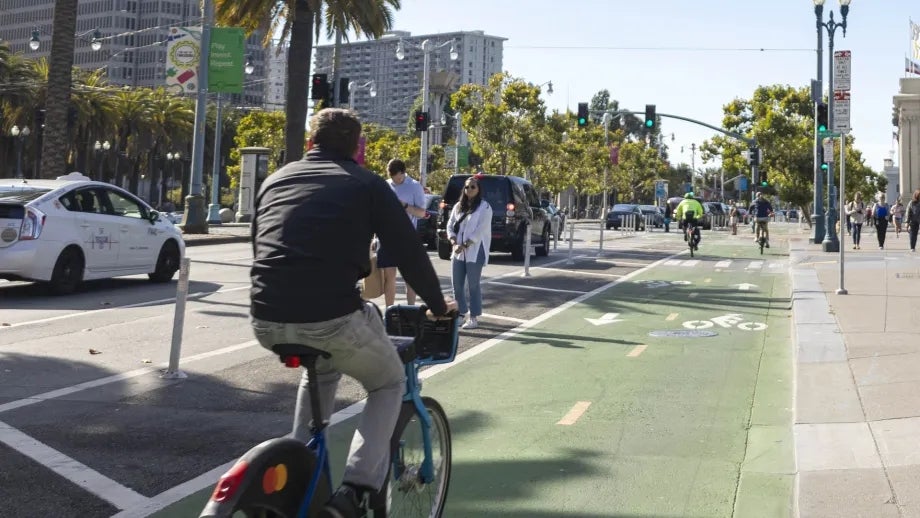What is active transportation?
What are examples of active transportation?
Bicycles and e-bikes, scooters, skateboards, roller skates, mobility devices including wheelchairs – and simply walking – all of these are active transportation.
Why is active transportation good for the Bay Area?
Active transportation produces little or no pollution, so it's better for air quality than many other methods of getting around. Plus, moving your body instead of using a vehicle is good for you!
The Active Transportation Working Group is helping more people use active transportation modes.
My destination is too far, and I have too much to carry.
Did you know that more than half of all trips in the Bay Area are less than 3 miles in length, and more than a quarter are less than 1 mile long?
As e-bikes become more affordable, biking can be a better option for some than taking a car.
Is it safe?
MTC’s Complete Streets program helps cities and local agencies build streets that are safer for all users, including more sidewalks and bike lanes so more people can travel without a car.
What’s the bigger picture?
One of the main goals of Plan Bay Area 2050 (the long-range plan for the region) is to reduce greenhouse gas emissions. MTC has committed $20 million to promote the use of e-bikes to encourage people to leave their cars at home.
What’s next in the Bay Area?
The biggest bicycle commute event in the U.S. – the 30th Annual Bay Area Bike to Work Day – is coming up on Thursday, May 16. It’s part of a month of celebrating active transportation: Bike to Wherever Days.






